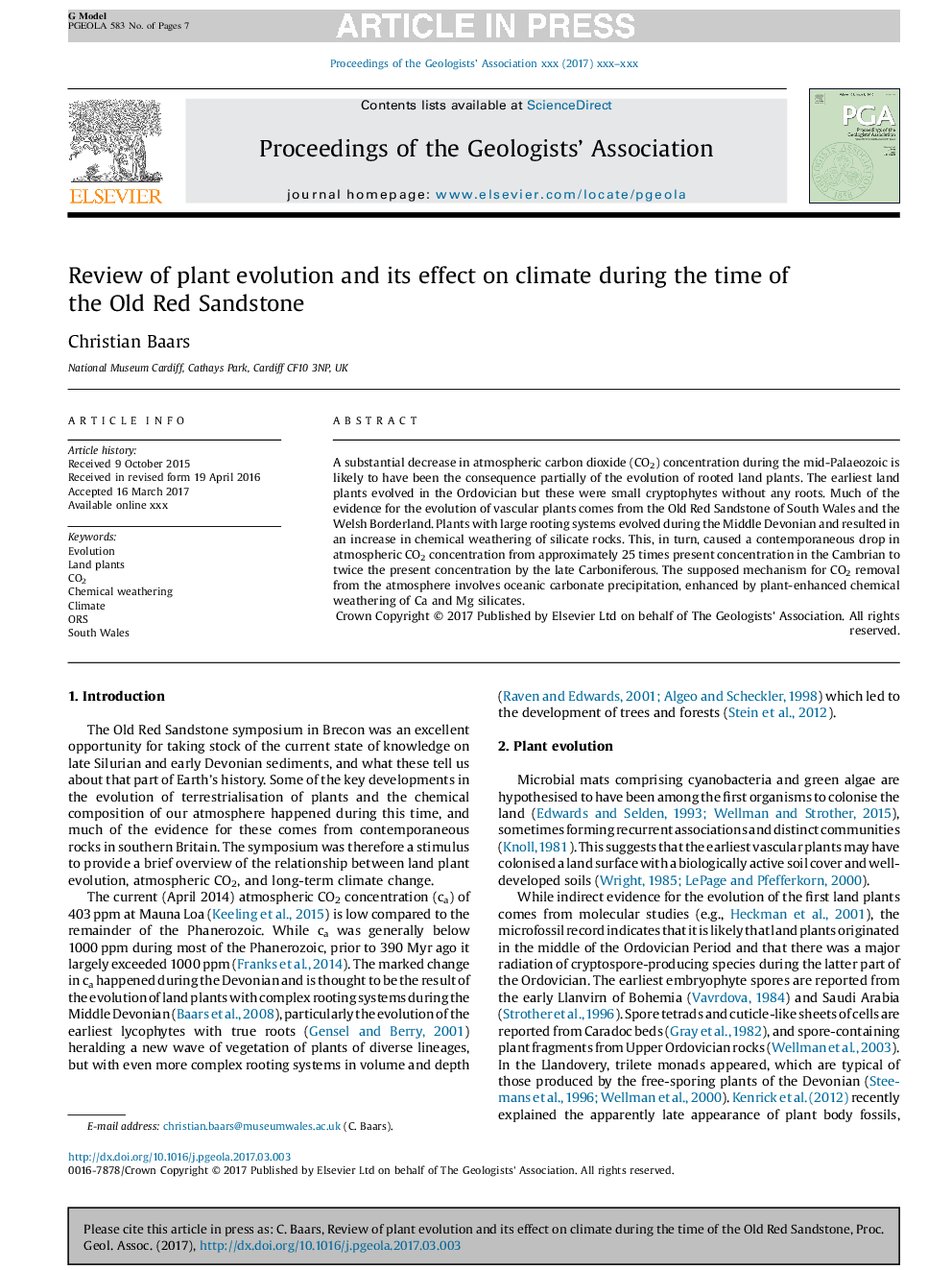| Article ID | Journal | Published Year | Pages | File Type |
|---|---|---|---|---|
| 5786440 | Proceedings of the Geologists' Association | 2017 | 7 Pages |
Abstract
A substantial decrease in atmospheric carbon dioxide (CO2) concentration during the mid-Palaeozoic is likely to have been the consequence partially of the evolution of rooted land plants. The earliest land plants evolved in the Ordovician but these were small cryptophytes without any roots. Much of the evidence for the evolution of vascular plants comes from the Old Red Sandstone of South Wales and the Welsh Borderland. Plants with large rooting systems evolved during the Middle Devonian and resulted in an increase in chemical weathering of silicate rocks. This, in turn, caused a contemporaneous drop in atmospheric CO2 concentration from approximately 25 times present concentration in the Cambrian to twice the present concentration by the late Carboniferous. The supposed mechanism for CO2 removal from the atmosphere involves oceanic carbonate precipitation, enhanced by plant-enhanced chemical weathering of Ca and Mg silicates.
Related Topics
Physical Sciences and Engineering
Earth and Planetary Sciences
Geology
Authors
Christian Baars,
